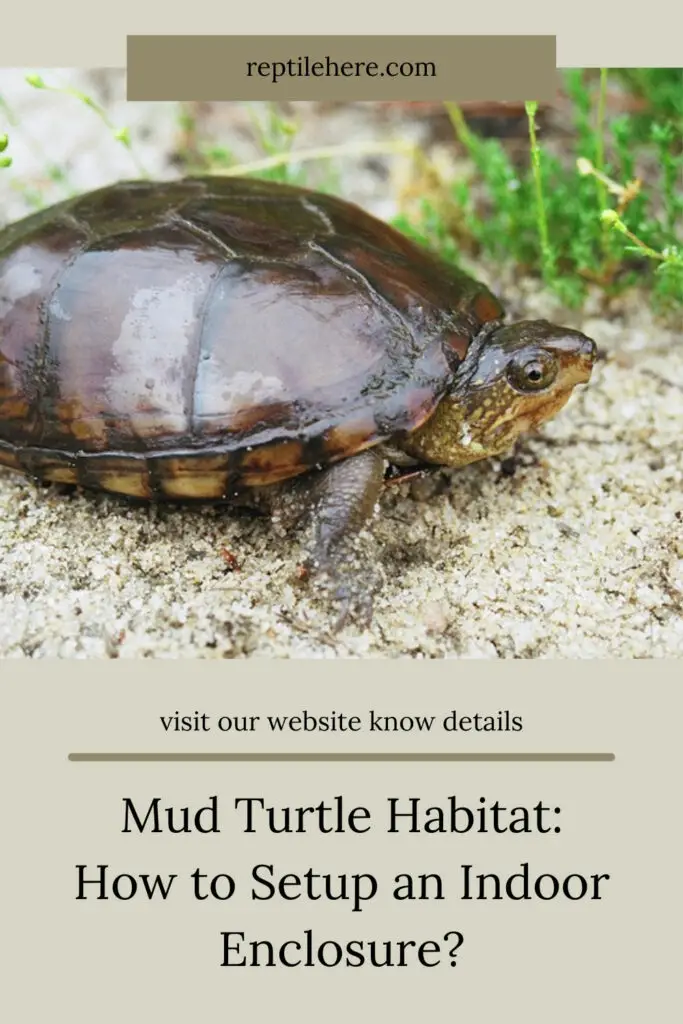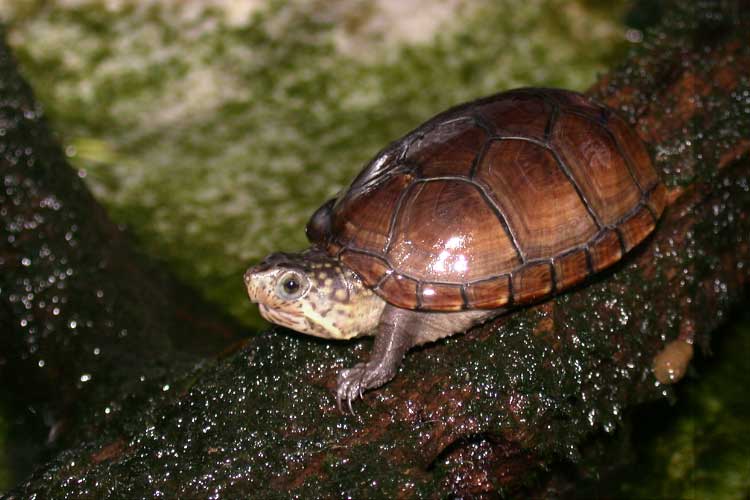Mud Turtle Habitat: How to Setup an Indoor Enclosure?
Mud turtles are one of the best beginner-level turtles. They’re a widely popular choice of per turtle for their reliably small size of around 3-4 inches. Caring for this turtle becomes easy if you put it in an enclosure that mirrors its natural habitat.
An ideal mud turtle tank setup should be made up of a decently sized tank with essential items such as a basking spot, water heater, UVB, and heat lamps. You can also enrich the turtle tank with substrate and décor accessories to make it look more natural to your pet turtle.
Discover more comprehensive details below about your mud turtle tank needs, steps to follow when setting up the turtle tank, and other helpful details to keep in mind.
What do you need for a mud turtle tank setup?
Contents
These are the essentials you’ll need for a perfect mud turtle tank setup:
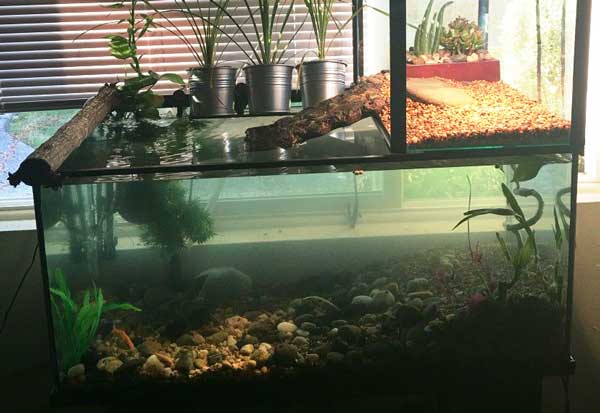
- Appropriate size tank
- String filtration system
- Tank heater
- UV light source
- Heat lamp
- Basking spot
- Substrate (optional)
- Decoration (optional)
How do you set up a mud turtle tank?
In this part, we’ll discuss the most important things to consider when setting up an indoor enclosure for your mud turtle.
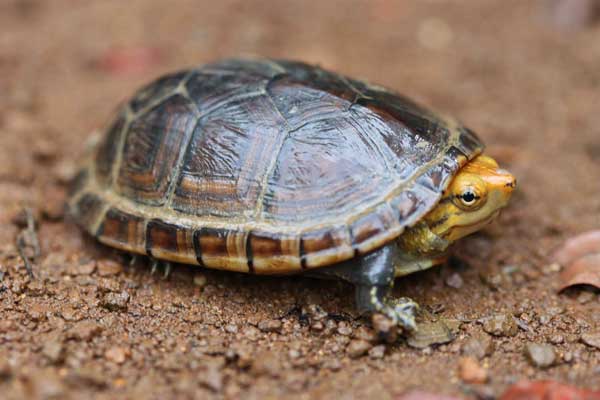
How to choose the right size of tank for a mud turtle?
Probably the most important step in setting up your mud turtle habitat is choosing the appropriate size of turtle tank.
Adult mud turtles are relatively small, around 3-4 inches long, and don’t require a large enclosure.
While you can house your turtle in a 25-gallon tank, we advise you to get a bigger tank o around 40 gallons to give your turtle enough space to swim and roam around.
Fill your new tank with water; make sure the depth of water comes up to a level that’s twice the length of your mud turtle.
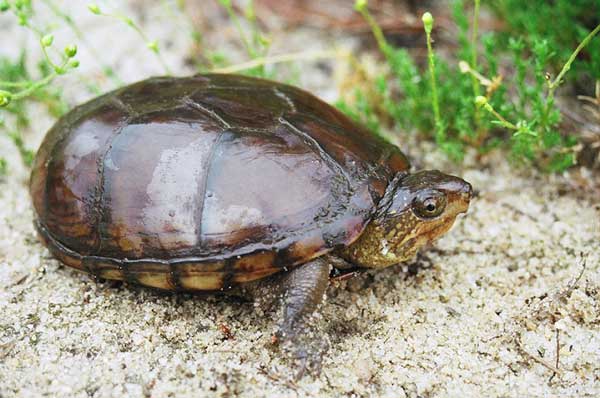
Setting up the filtration system
A strong filter is also an essential part of your mud turtle indoor enclosure. These turtles spend most of their time in the water, where they eat, poop, and urinate inside the water. This mess can quickly deteriorate the tank water quality, hence the need for a filter.
We recommend installing the canister filter as it’s more efficient and reliable at cleaning your turtle aquarium. The filter will easily remove turtle waste from the water and then recirculate the fresh water in the tank—keeping your turtle happy and healthy!
Do you need a basking spot for mud turtles?
Basking turtles hardly bask in the sun in while in their natural habitats. Insetad, they prefer spending their time at the bottom of ponds or waters, walking, or buried under the leaves.
Despite this, we still encourage you to provide your pet turtle with a basking area with a heat lamp for health concerns.
You can easily find a commercial basking dock for your pet turtle or you can DIY your own platform using items like logs, foams, ceramics, etc.
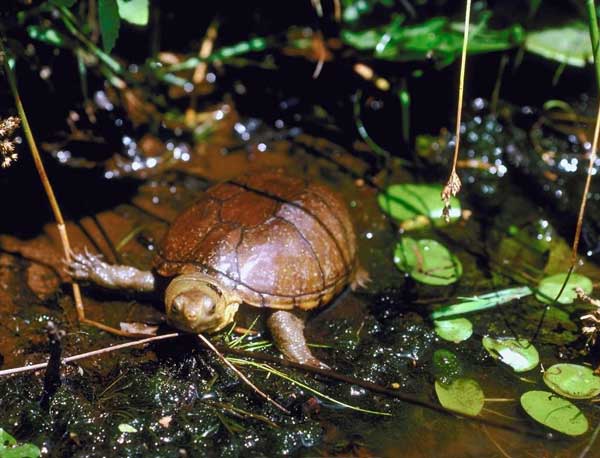
Just make sure you get something that covers just a 1/3 of your turtle tank enclosure.
A good platform should have a ramp connecting it to the water part to enable your turtle to easily get into the basking area. Plus, make sure the platform doesn’t become wet and can bear your turtle’s weight.
Above all, ensure it has no sharp edges that may injure your pet
The right temperature for mud turtle tank
Since mud turtles can’t regulate their own temperature, it’s upon you to constantly monitor their body temperature and ensure it stays at the correct levels.
That’s why you’ll need to install a heater underwater and a heat lamp in the basking area.
The recommended temperature for mud turtle tank water is 75-78°F while that of the basking area should be 86-92°F.
Put the heat lamp on one side of your tank enclosure and position it directly over your basking dock. Keep it at the same height as the UV light.
The right water heater should be rated for the amount of water inside your turtle tank. Install it inside the tank as per the manufacturer’s instructions.
Lighting for mud turtle tank
Your mud turtle also requires maximum UV light exposure to produce the vitamin D3 needed for proper calcium metabolism.
Set up a UV bulb in your enclosure to ensure your pet enjoys a daily dose of UVB rays in its indoor enclosure. And make sure you change your UV lamp every 12 months as these lamps tend to decay over time.
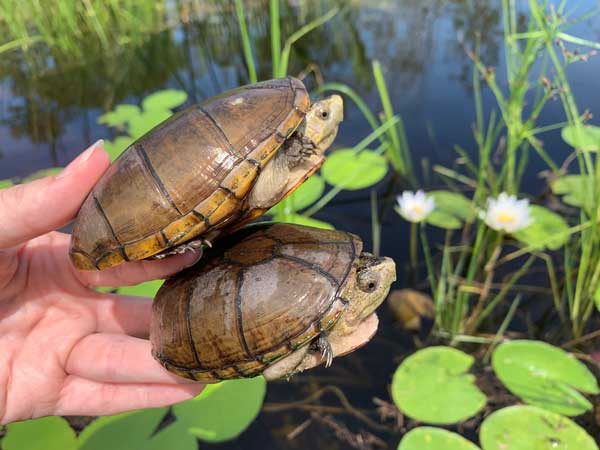
Regarding the placement, your bulb should be half the length of your enclosure. You should also place it a distance of around 13 to 15 inches from the heat lamp in the basking platform.
Also, you may consider providing your turtle with strong LED lighting for extra illumination and to help replicate daylight. This will also prove helpful for any live plants in the tank.
Do you need a substrate for a mud turtle enclosure?
Substrate isn’t necessary for your mud turtle indoor enclosure. However, you can still introduce it to your tank to improve its overall aesthetics.
We suggest using large gravels for substrate instead of muddy bottom which is more likely to make your tank dirt and give your filter system extra work.
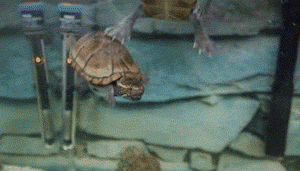
What accessories should you consider for mud turtle tank?
Accessories help enrich your pet turtle tank and make the environment fun for your mud turtle.
However, you need to be careful what type of accessories you choose as some can be health and safety hazards for your little friend.
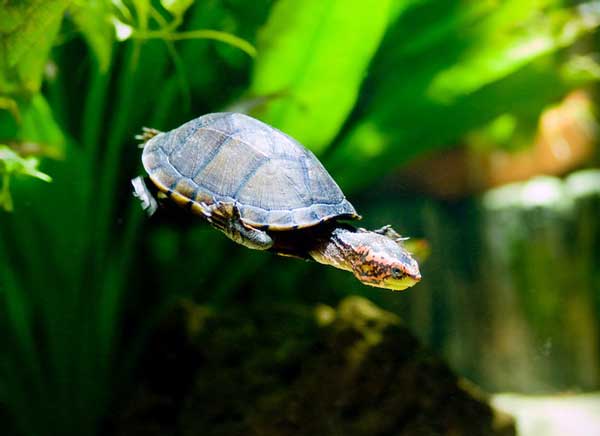
We advise adding both artificial and natural plants to your turtle tank to help create a more natural look. Large river rocks will also help create a natural look.
Hiding spots, floating driftwood, hollow logs, etc., are also welcome ideas for decorating your turtle tank.
What does a baby mud turtle need in a tank?
If you’re setting up a baby mud turtle enclosure, you can follow the exact same tips we’ve recommended above.
Baby turtles don’t have special habitat needs and will be happy living in the same conditions as their adult counterparts.
So, make sure you provide your baby turtle with a large tank size. A small 20-gallon tank will work for your baby turtle but you’ll need to upgrade to a bigger tank as your pet grows.
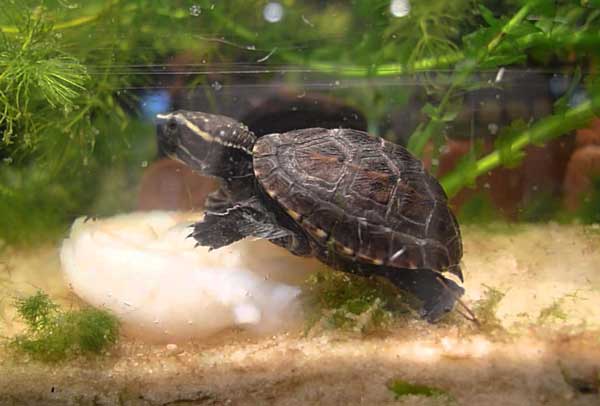
Equip your tank with a filtration system, UV lighting, heat lamp, comfy basking spot, and set the recommended water and basking area temperatures.
You can also enrich the aquarium with various décor accessories to make it more fun for your baby mud turtle pet.
Do mud turtles need a muddy enclosure?
No. Just because mud turtles like burrowing in the mud in the wild doesn’t necessarily mean that you should provide them with a muddy bottom.
Remember, these turtles burrow in the mud because they’re hibernating in the cold winter months. Hibernation is discouraged for captive turtles. Thus, you should provide them with mud substrate.
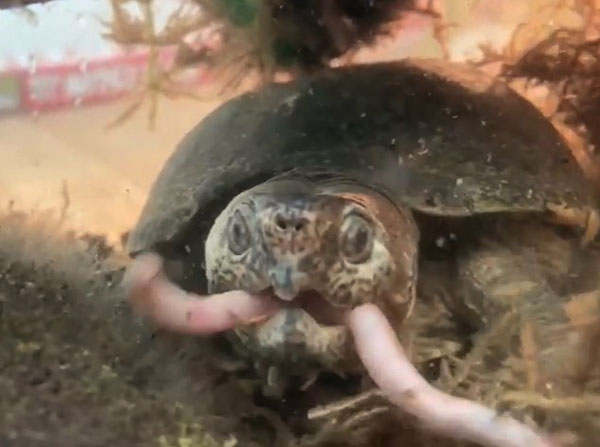
Besides, a muddy bottom will make your tank dirty faster. Consider other substrates such as wet leaves or loam. Put in the dry part of your aquarium where your turtle can easily bury itself.
Are mud turtles fully aquatic?
Mud turtles are considered semi-aquatic species. In the wild, they prefer inhabiting shallow and slow streams of water.
They also like walking along the bottom of the waters most of the time as opposed to swimming.
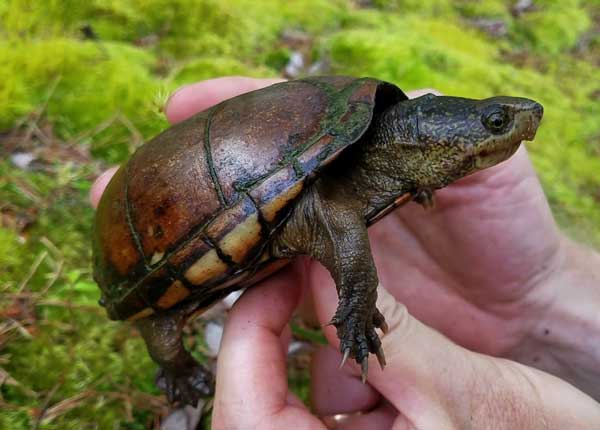
Even better, these turtles can survive in brackish water as well, putting them on the list of the few species capable of surviving in both freshwater and saltwater conditions.
Mud turtles also like burrowing themselves in the mud (hence their name) during aestivation in the cold winter months.
FAQs:
A juvenile mud turtle can live in a 20-gallon tank given its small size. However, we advise getting a more spacious tank for your turtle to give them enough room for swimming and roaming around. Bigger is always better when it comes to turtle tanks.
The water depth for mud turtles should be shallow as mud turtles are generally poor swimmers. The depth should be the same as the widest part of your turtle; that’s approx. 2-4 inches for hatchlings and around 8-12 inches for adult mud turtles.
Yes, mud turtles sleep underwater for 4-7 hours. This isn’t surprising given that most turtle species generally sleep underwater for prolonged hours.
Final Verdict
That’s all you need to know about setting up an indoor enclosure for your mud turtle. The most important tip to keep in mind is choosing the ideal tank size and filling it with water up to the recommended depth. Furnish the tank with a filtration system, basking dock, UV light, and heat lamp.
Hopefully, the tips we’ve shared in this guide have given you insights on how to come up with a comfortable and healthy living environment for your newly found friend.
